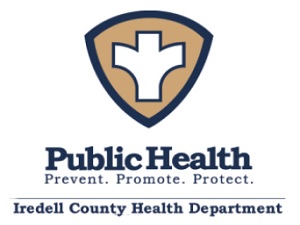
Special to Iredell Free News
The Iredell County Health Department has been working with health care providers and community partners to promote awareness of monkeypox, including what symptoms to look for, how to test for it, and ways to help prevent transmission.
As of August 23, N.C. Department of Health & Human Services reports 261 cases of monkeypox/orthopoxvirus in North Carolina. There are 15,433 reported cases in the United States, and 42,954 cases globally, according to the Centers for Disease Control and Prevention (CDC).
Anyone can become infected with monkeypox. However, because monkeypox requires close and prolonged contact, close-knit social networks have been particularly impacted. Close contact, sustained skin-to-skin contact, including sexual contact, with a person with monkeypox or contact with contaminated items are important risk factors.
Symptoms of monkeypox can include fever, headache, muscle aches, swollen lymph nodes, and a rash that can look like pimples or blisters. In this outbreak, some individuals have had a rash only and no other symptoms, and sometimes the rash consists of only a few sores. The rash can occur in the mouth, and there may be sores in the genital and anal areas. In other cases, a rash may be on the face and on other parts of the body.
The illness typically lasts two to four weeks and most people get better on their own without treatment.
However, sometimes monkeypox can cause scars from the sores, lead to pneumonia, and in rare cases even be fatal.
People who have monkeypox can spread the virus from the time symptoms start until the rash has fully healed and a fresh layer of skin has formed. The virus does not easily spread between people with casual contact, but transmission can occur through contact with infectious sores and body fluids; contaminated items, such as clothing or bedding; or through respiratory droplets associated with prolonged face-to-face contact.
Patients determined to be at high risk for exposure should be vaccinated with the Jynneos vaccine.
Patients who have experienced a high-risk exposure should ideally be vaccinated within 14 days of the date of exposure. Vaccination is most effective when given within four days of the date of the exposure. Vaccine given between four and 14 days after the date of exposure may reduce symptoms of disease but may not prevent the disease.
To prevent the spread of monkeypox:
• Practice good hand hygiene. For example, washing your hands with soap and water or using an alcohol-based hand sanitizer.
• Minimize skin-to-skin contact with individuals who have been exposed to the virus or to those showing a rash or skin sores.
• Avoid contact with any materials, such as bedding, that has been in direct contact with someone with monkeypox.
• Reach out to a health care provider if you develop symptoms, as early recognition and testing can help prevent further transmission.
LEARN MORE
More information about the virus, testing, case demographics, who qualifies for vaccination, and how to limit infection risk can be found at https://www.ncdhhs.gov/divisions/public-health/monkeypox



